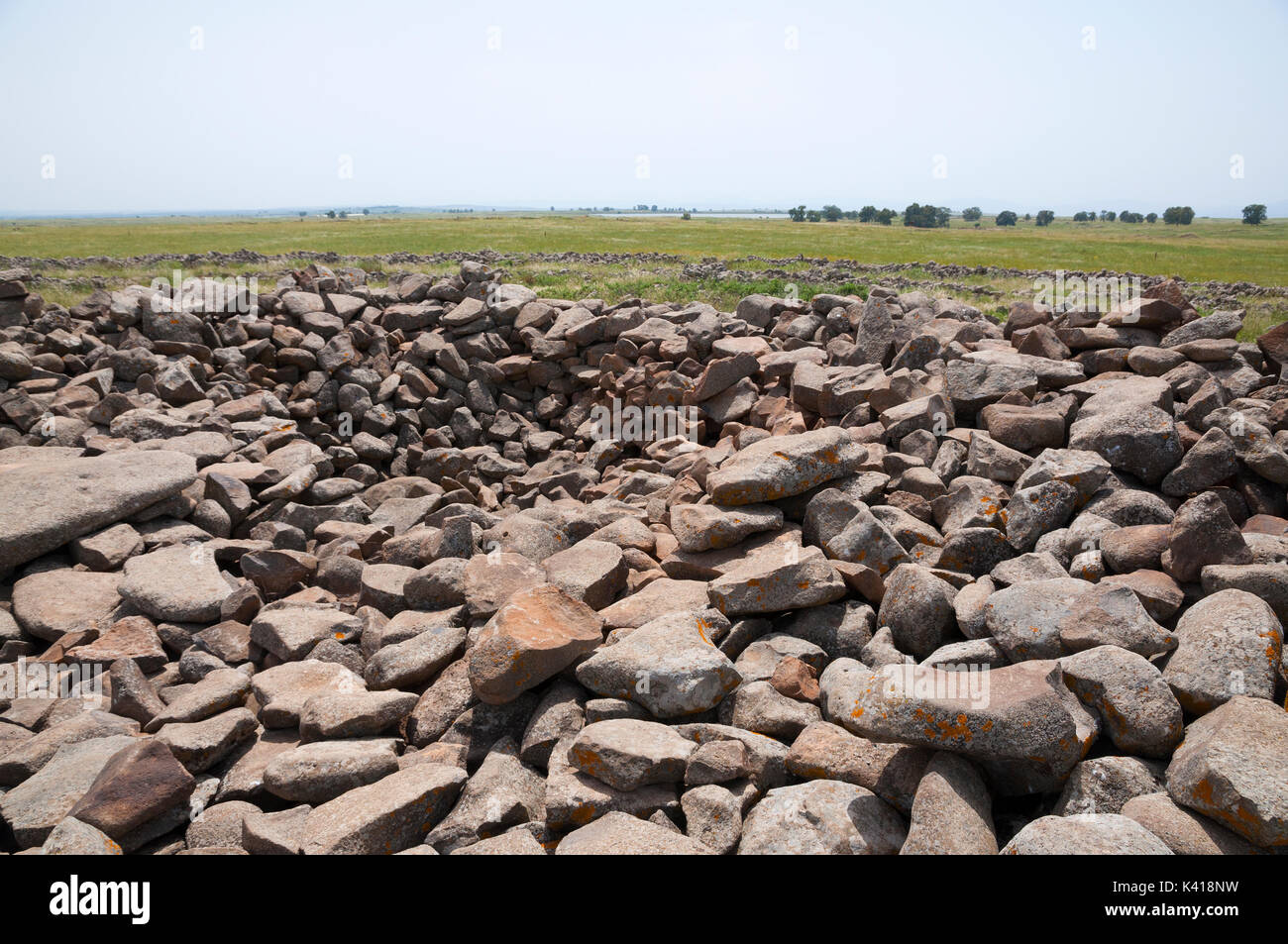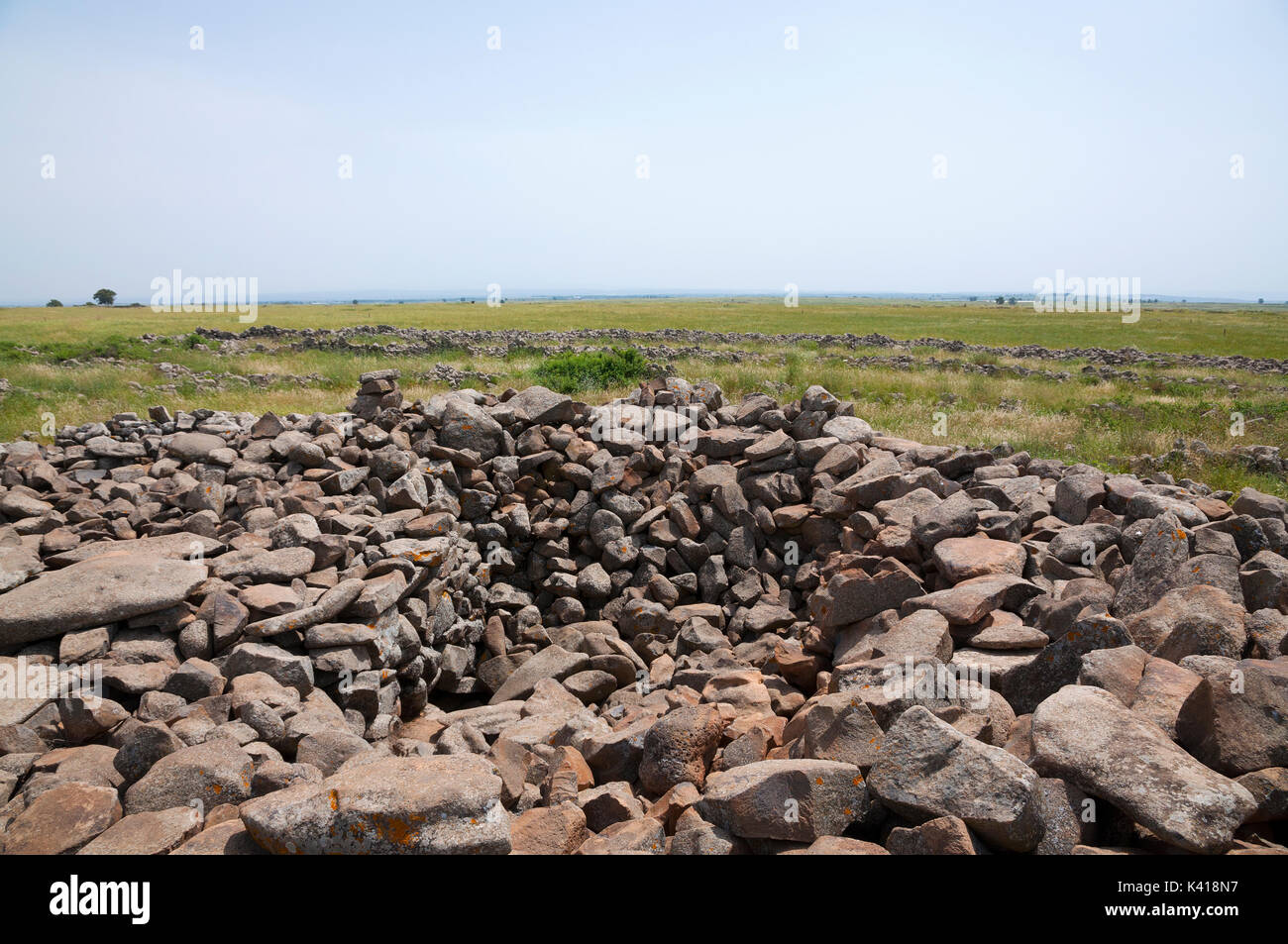
Hypotheses Worship According to this hypothesis, the site was used for special ceremonies during the longest and shortest days of the year.

After this initial study, serious archaeological excavations commenced in the 1980s under Israeli professors Moshe Kochavi and Yoni Mizrachi, as part of the Land of Geshur Archaeological Project. The surveyors used Syrian maps, and a Syrian triangulation post was found on top of its cairn. The site is probably the source of the legends about "a remnant of the giants" or Rephaim for Og. The site was cataloged during an archaeological survey carried out in 1967–1968 by Shmarya Gutman and Claire Epstein. Geometry and astronomy are visually connected by the temple's design. Mount Hermon is almost due north and Mount Tabor is close to December solstice sunrise. The axis of the tomb discovered at the site's center is similarly aligned. The northeast entrance leads to an accessway 20 feet (6.1 m) long leading to the center of the circle which seems to point in the general direction of the June solstice sunrise. Two entrances to the site face the northeast (29 meters (95 ft) wide) and southeast (26 meters (85 ft) wide). The fourth and outermost wall is the largest: 150 m in diameter and 3.2 m wide.Ī central tumulus 65 feet (20 m) in diameter and 15 feet (4.6 m) high is surrounded by concentric circles, the outermost of which is 520 feet (160 m) in diameter and 8 feet (2.4 m) high.
#Rogem hiri full#
The third wall is a full circle, 110 m in diameter and 2.6 m wide. That wall is connected to a second one, an almost complete circle 90 m in diameter. The first wall, shaped like a semicircle, is 50 m in diameter and 1.5 m wide. Connecting to it are four main stone walls.

The central tumulus is built from smaller rocks, and is thought to have been constructed after the surrounding walls were constructed. The walls of the circles are connected by irregularly placed smaller stone walls perpendicular to the circles. The remains consist of a large circle (slightly oval) of basalt rocks, containing four smaller concentric circles, each getting progressively thinner some are complete, others incomplete. The site is often referred to as the " Stonehenge of the Levant." It was estimated by Freikman that the transportation and building of the massive monument would have required more than 25,000 working days. It is made from 37,500-40,000 tons of partly worked stone stacked up to 2 meters (6.6 ft) high. The site was made from Basalt rocks, common in the Golan Heights due to the region's history of volcanic activity. The site's size and location, on a wide plateau which is also scattered with hundreds of dolmens, means that an aerial perspective is necessary to see the complete layout.

However, there is no consensus regarding its function, as no similar structure has been found in the Near East. Since excavations have yielded very few material remains, Israeli archeologists theorize that the site was not a defensive position or a residential quarter but most likely a ritual center featuring ritual activity to placate the gods, or possibly linked to the cult of the dead. The establishment of the site, and other nearby ancient settlements, is dated by archaeologists to the Early Bronze Age II period (3000–2700 BCE). The outermost wall is 520 feet (160 m) in diameter and 8 feet (2.4 m) high. Some circles are complete, others incomplete. Made up of more than 42,000 basalt rocks arranged in concentric circles, it has a mound 15 feet (4.6 m) tall at its center. It is located in the Israeli-occupied portion of the Golan Heights, some 16 kilometres east of the coast of the Sea of Galilee, in the middle of a large plateau covered with hundreds of dolmens. Rujm el-Hiri is an ancient megalithic monument consisting of concentric circles of stone with a tumulus at center.


 0 kommentar(er)
0 kommentar(er)
